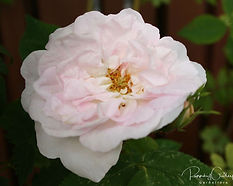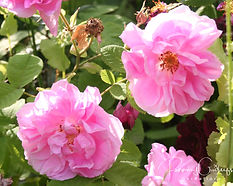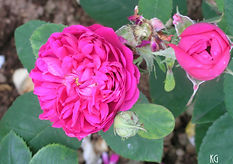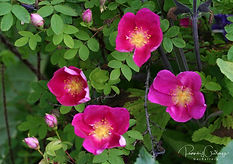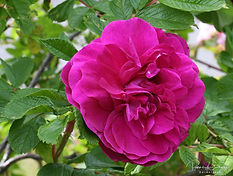

Antique roses, or old garden roses, are garden roses which originated before 1900. It is not a line chiseled in stone though, but can vary from the late 19th century to the mid 20th century. Most of them are single bloomers, at least the ones that can be grown in Iceland and most have white or pink flowers.
Gallicas
Gallica roses form dense shrubs, with coarse, bright green leaves. The flowers can be single or double in colours ranging from white to dark burgundy and purple. Cultivars with single flowers are sometimes mor hardy than the ones with double flowers. They all need a sheltered position in the garden.
-
'Merveille'
Albas
Most albas have very tightly double, fragrant flowers, pink or white and greyish-green leaves. They were widely grown in the 19th century. Many Albas thrive here in Iceland, given a sheltered position. They can even tolerate a little part-shade.
Damasks
Damasks have strongly fragrant flowers and downy leaves. They are tender and need a very sheltered spot.
Centifolias
Centifolia means a hundred leaves and refers to the tightly double flowers, which are very fragrant.
Moss roses
The moss on moss roses is a mutation that gives a mossy growth on the sepals, flower stalk ad sometime even leave stalks and branches. It's usually green, can be hard or soft, often sticky and with a resin scent. The flowers are in pink and red shades and are very fragrant.
Portland roses
Repeat flowering roses with double flowers in pink or red shades, usually fragrant. They are hybrids of repeat flowering Damasks and Gallicas..
Pimpinellifolias/Spinosissimas
Scotch rose hybrids (Pimpinellifolias) flower early, like the species Scotch roses. Many have the finely divided leaves of the Scotch rose and fairly small single, or double flowers. Many form round, black rose hips. Most cultivars have pink or white flowers. Yellow cultivars are hybrids between the Scotch rose and R. foetida. Most Pimipinellifolias were bred in the 19th and early 20th century, but a few were bred after 1950 and can hardly be classified as Antique roses. They are all grouped together here.
Rugosas
Rugosas are hardy, ever-blooming shrubs with large, fragrant flowers. They form large, round, orange hips. Rosa rugosa is native to E-Asia. The antique rugosas were bred from 1890-1915, among them 'Hansa' which is very widely grown in Iceland and has proved very hardy. More recent additions are often grouped with modern shrub roses, but I group all the Rugosas together here as they are usually more hardy than other modern shrubs.

Wichurana ramblers
Wichurana rambles were first bred around 1900 along with the Multiflora ramblers. They are hybrids of R. wichurana and R. multiflora respectively. These hybrids are usually once flowering. They are very large climbers, with long, supple branches which contributed to the growing popularity of arches and pergolas in gardens of that period


